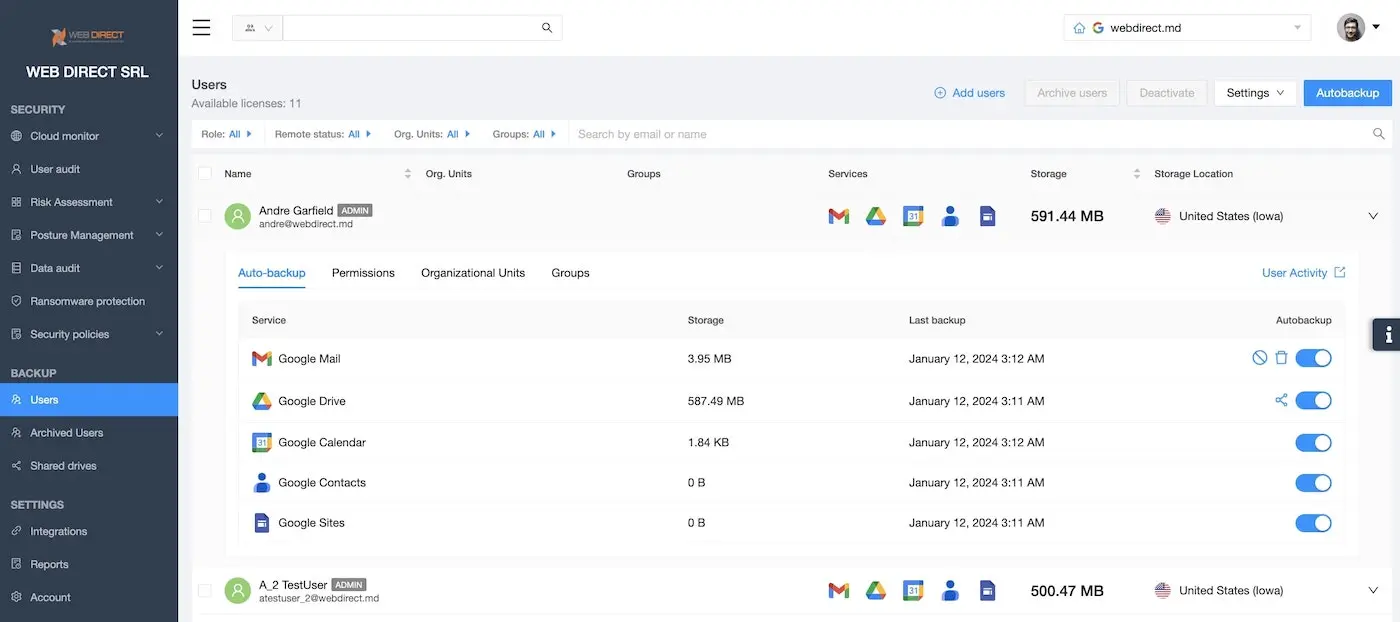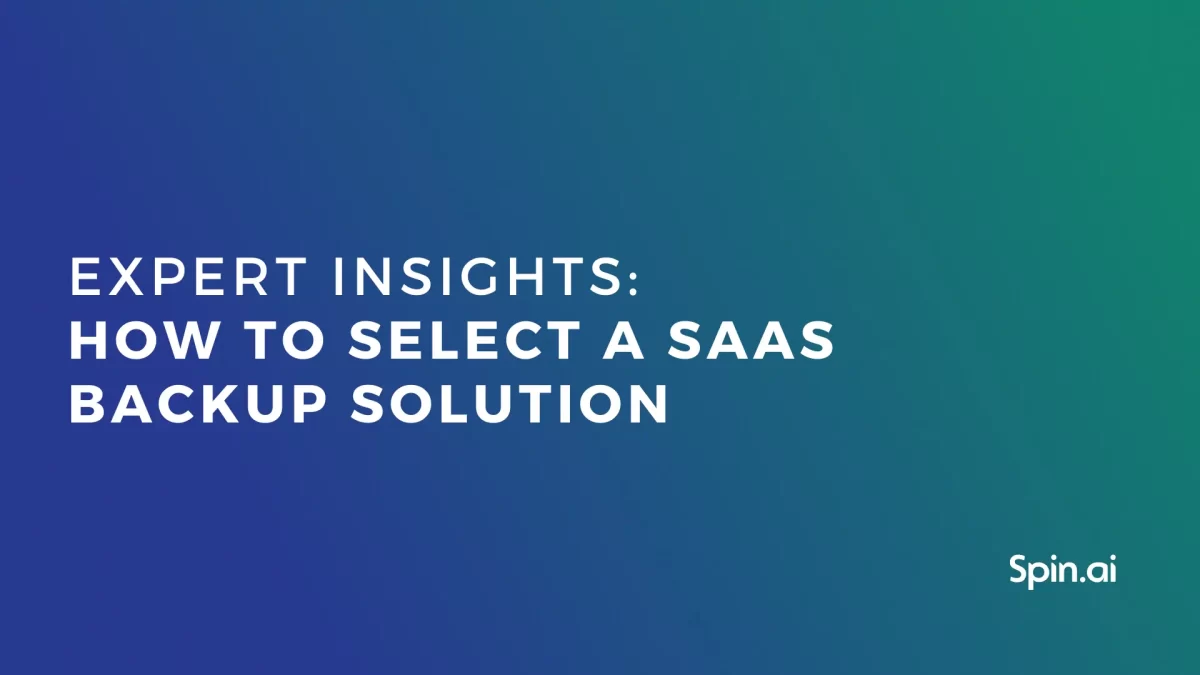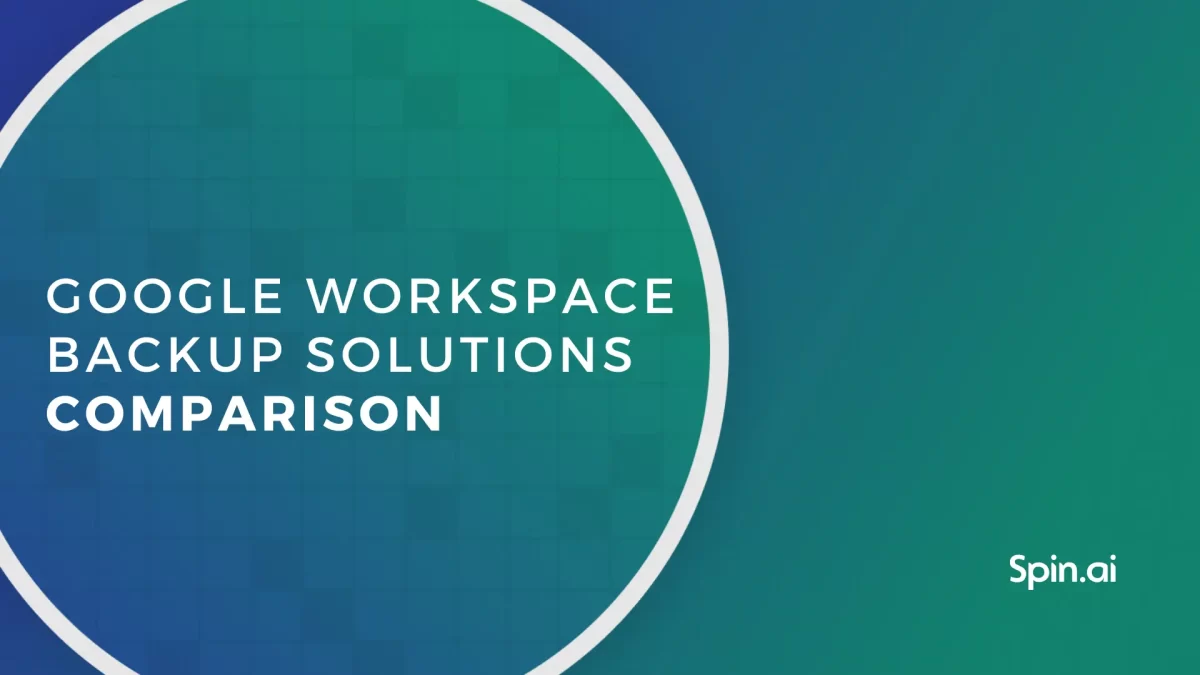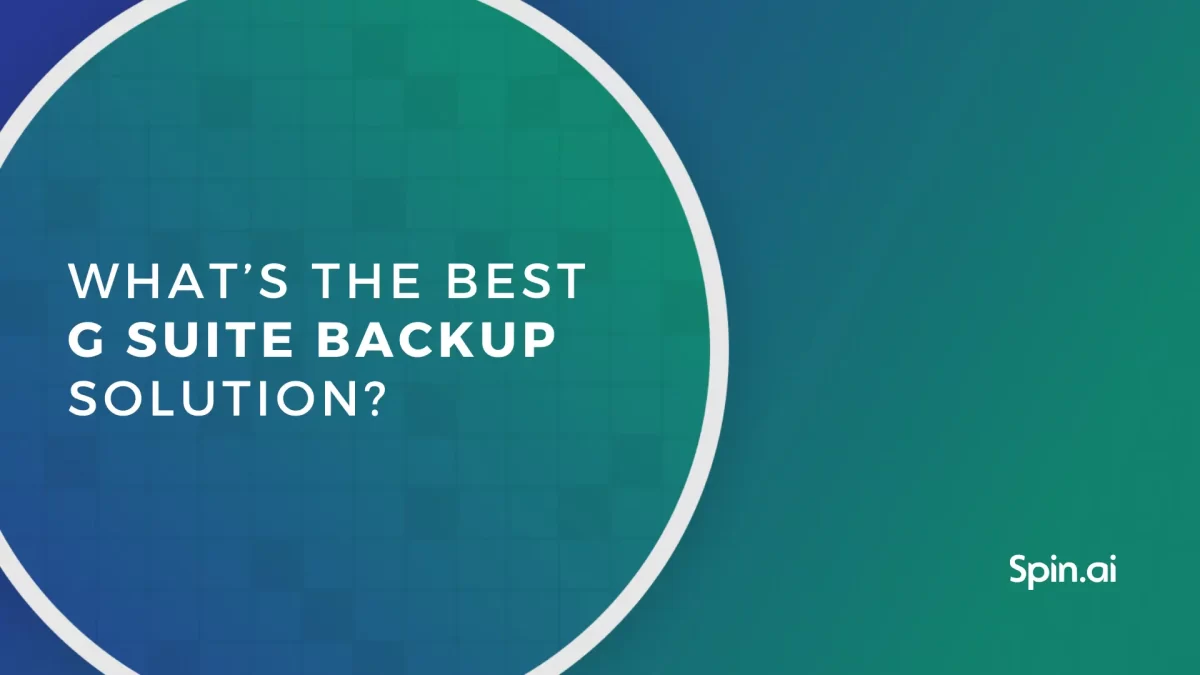Google Workspace: Security Best Practices for Backup

When thinking about Google Workspace security best practices, many things come to mind. However, backups may not be readily considered when moving core enterprise applications into a cloud-computing scenario. Backups of cloud data should be considered crucial to the overall security strategy of organizations with hybrid cloud or native public cloud business-critical applications, data, and infrastructure. An organization today that thinks it will never need to protect or recover cloud data is simply not living in reality.
Google Workspace Backup is essential to making sure data is secure. No matter how many Google Workspace security mechanisms are in place, no data in existence is 100% secure. With high-profile ransomware infections making headlines, many enterprises that thought their data was secure had to rethink this conclusion.
There is always a risk, even if remote, that data can be accidentally or intentionally deleted or even corrupted by a malware infection. Also, we recommend finding out more about Google Workspace add-ons risk.
Let’s take a closer look at this notion of backups as an integral part of the overall cloud security strategy. With Google Workspace (G Suite), how can Google Workspace administrators make sure their organization’s data is secure?
Why Is Google Workspace Backup an Important Part of Security Best Practices?
Google Workspace backup is crucial for security. It helps restore data if it gets damaged, deleted, or corrupted due to a security event, whether accidental or intentional.
This can be due to the accidental end-user or Google Workspace administrator actions, or intentional actions perhaps by an attacker or malware.
Often, attackers want to disrupt business continuity by causing downtime as the result of data loss or data that is unusable due to being encrypted in the case of a Ransomware infection. Google Workspace administrators want to be able to protect the Google Workspace admin account and maintain business continuity by being able to reconstruct or restore data as quickly as possible.
Thinking about Google Workspace (G Suite) security in this way allows organizations to have a business continuity plan that makes it possible to recover from downtime resulting from data loss. Backups, allowing organizations to recover data, are an essential part of any business continuity plan. Many businesses struggle with architecting an effective Google Workspace (G Suite) data protection solution once they start placing data in the cloud for a number of reasons.
For one, traditional backup solutions that still use on-premise backup often do not provide the features and functionality that allow tight integration with today’s hybrid cloud infrastructure. Additionally, there have proven to be misconceptions about public cloud infrastructure and the security of data residing in public cloud resources.
Google Workspace Backup and Sync
Google has shown they want to facilitate the ability for both end-users and enterprises to store files in the cloud – Google Cloud. They have provided the tools to both end-users and enterprise environments that allow synchronizing files from on-premise environments to cloud storage.
There are two applications – Google Backup and Sync and Google File Stream that make this possible. Google Workspace “Backup and Sync” is the personal application that is used by home users while Google “Drive File Stream” is the enterprise counterpart that allows integration with Google Workspace (G Suite) Team Drives and allows Google Workspace administrator control.
Public cloud vendors have up-time ratings and security that is hard to equal, let alone surpass by enterprise environments. However, at the end of the day, the security of the “data” is the organization’s responsibility. Cloud Ransomware attacks can encrypt data that is stored in the cloud the same as it can encrypt data that is on-premise.
For example, on-premise files that become encrypted by ransomware can be unknowingly synchronized from an end-user workstation up to the cloud with applications such as Google Workspace Backup and Sync.
Another problem presented by traditional backup technology solutions is that production backups are often stored on the same networks and server/network infrastructure as production workloads. A cardinal rule that must be kept in mind concerning backups – they are only good if they can be restored.
When organizations are hit with ransomware attacks, many find out the hard way that having backups of business-critical systems stored at the same site or in the same network location as the production workloads is not a good idea. Ransomware can infect production data AND backup data if it is accessible by ransomware encryption processes.
Backing up data stored in the cloud is no different. Organizations need an enterprise Google Workspace backup solution that is able to backup Google Workspace data in the public cloud and store the data safely, efficiently, and securely in another location.
Best Google Workspace Backup Solution
Let’s take a look at how SpinOne is able to provide organizations today with the best Google Workspace backup solution to protect data stored in Google Workspace. It is able to provide the following benefits to organizations:
- Automated Daily Backups
- Google Workspace Data Migration
- Google Workspace Data Deletion Control
Automated 3X Daily Google Workspace Data Backup
Automated 3X Daily Google Workspace Data Backup is an essential part of Google Workspace (G Suite) security. Google Workspace (G Suite) administrators keen on preventing data loss of Google Workspace (G Suite) data need to give priority to backing up Google Workspace data to ensure business continuity. On-premise backups are generally automated and happen in an organized fashion across the production workloads. Backups of public cloud data need to happen in an automated fashion as well.
SpinOne allows the protection of Google Workspace (G Suite) critical data: emails, contacts, calendars, documents, sheets, and any other files that reside in an organization’s G Suite cloud. It protects data from accidental deletion, deletion or corruption from an attacker, and data corruption resulting from the likes of a ransomware attack or any other event making data unusable.
The automated backup can be scheduled based on a time that is convenient for organizations and their data use patterns. Also, Google Workspace administrators can be selective to which data is protected by granularly selecting folders or data based on labels defined for Google Workspace services. This includes Gmail, Drive, Contacts, Sites, and Calendar. Administrators can also choose to backup their data on their choice of secure cloud storage: AWS, GCP, Azure, or BYOS.
Data Migration
Backups of data are crucial, especially during data migration. Migration of Google Workspace data to Google Workspace public cloud resources can be between Google accounts or from on-premise data storage to Google Workspace (G Suite) data storage in the cloud. In either case, backing up data is an integral part of the process.
SpinOne allows organizations to efficiently migrate data between Google accounts. This is especially helpful in the case of an employee leaving the organization, for example. Deleting the account is likely not desirable since there may be important data contained within the account of the employee who has left. Keeping the account and simply changing the password also may not be desirable since organizations will still be responsible for paying for the services for the employee who has left simply to keep the data intact.
SpinOne provides an easy way to manually restore data from the employee’s services to another user in the Google Workspace (G Suite) organization. This provides the best-case scenario where important data remains, and organizations are able to clean up any unused employee accounts and save money.

Selecting the resources for the granular restoration of data from one account to another

Restoring files to the chosen Google Workspace account
Backups during migration from on-premise to the Google Google Workspace cloud are also extremely important. Backups of Google Workspace (G Suite) data should be in place the moment that the first data is copied from on-premise to the cloud. This ensures that in the event of any disaster-related scenario, data in the Google Workspace cloud is protected.
By having SpinOne protect the organization’s Google Workspace data, organizations can confidently migrate data from on-premise to the Google Workspace cloud without being concerned with potential data loss.
Deletion Control
An area that correlates to backing up business-critical Google Workspace data is deletion control. Most backup solutions have a retention period that is cycled through for data that is kept on hand for the purposes of restoring. However, when thinking about restoring data that may have been deleted from the Google Workspace environment, Google Workspace administrators need the visibility of data that has been deleted.
By having this visibility, Google Workspace administrators deploying Google Workspace security policies are better able to proactively manage data restores and any potential Google Workspace breach in Google Workspace organization security that may have been the result of compromised credentials or malicious actions either by a current employee or an attacker.
SpinOne provides deletion control that allows “trash bin” checking. This allows a daily audit and recovery of Google Workspace files that have been deleted. The visibility to this activity greatly empowers Google Workspace administrators to notice trends or possible activity. One-click restores, provided by SpinOne from the “restore in a time machine” functionality, provides a super-easy way to recover lost data.
Thoughts
Backups are an essential part of any enterprise security strategy, both on-premise as well as in the cloud. Businesses today must strive to maintain business continuity in the event of a data disaster, whether at the hands of accidental data loss or a system-wide ransomware attack. Despite the resiliency that public cloud vendors offer in the way of up-time and redundancy, the “data” is still the responsibility of its owner.
According to the Google Cloud Shared Responsibility Model, your data is your responsibility. Any data that is copied to and stored in the public cloud is the responsibility of the organization to maintain and protect.
SpinOne has proven itself in the world of protecting business-critical data stored in the cloud. Google Workspace (G Suite) administrators who use SpinOne for protecting data by utilizing its powerful cloud-to-cloud backup technology will find themselves in a much better position to deal with data leak disasters.
SpinOne’s versatile capabilities when it comes to migrating data, either between accounts or from on-premise to the cloud, empower Google Workspace administrators to protect data in today’s hybrid cloud topologies. By allowing visibility to data deletion and powerful daily audits of this type of activity, Google Workspace administrators can be proactive rather than reactive when dealing with data loss, data leak, ransomware protection, compliance, and insider threat control.
SpinOne an all-in-one SaaS security platform, providing a “single pane of glass” for Google Workspace backup, audits, recovery and Google Workspace data protection for organizations and their data. Discover proof points for using SpinOne in enterprise customer success stories and reviews.
Was this helpful?
How Can You Maximize SaaS Security Benefits?
Let's get started with a live demo
Latest blog posts
Expert Insights: How to Select a SaaS Backup Solution (Part 2)
April 26, 2024Welcome back to our blog series on SaaS data protection. Part 1 focused on data... Read more
Google Workspace Backup Solutions Comparison
April 26, 2024The number of Google Workspace (formerly GSuite) backup solutions is overwhelming, and choosing the right... Read more
What’s the Best Google Workspace Backup Solution?
April 26, 2024In today’s digital age, businesses rely heavily on cloud-based services like Google Workspace (G Suite)... Read more


